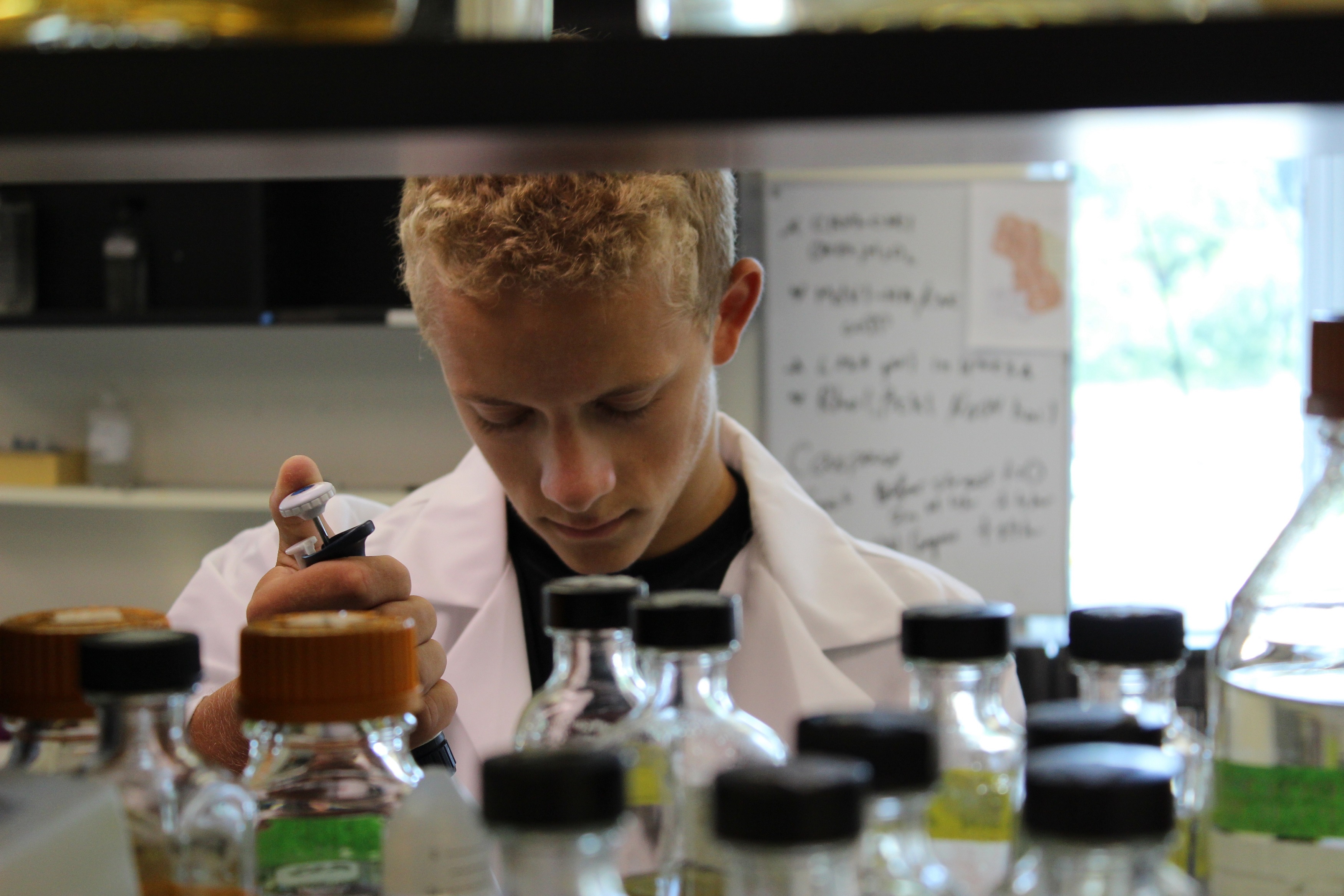Summer Program Brings High School Students to GSBS Labs
Summer Program Brings High School Students to GSBS Labs

Five area high school students earned high fives – literally and figuratively – when they spent five weeks on the Stratford campus gaining valuable research experience. For five hours a day, five days a week, students worked side-by-side with faculty mentors and doctoral students in the new High School Biomedical Science Research Program at Rowan’s Graduate School of Biomedical Sciences (GSBS). As part of the program, the high school students were required to perform experiments to address independent questions relevant to the ongoing research of their faculty mentors. And, once a week, they came together for a lecture from a GSBS faculty member.
The program was the brainchild of Katrina Cooper, PhD, an associate professor in Molecular Biology at GSBS, who recalled the value of a similar experience when she was a student.
“When I was an undergraduate, I did an unpaid four-month internship at Harvard,” she said. “That was the turning point in my career. I’m hoping that through this program we can do the same for these students.”
Dr. Cooper said one of the objectives of the program was to expose high school juniors and seniors to academic research. Each student was assigned to a lab where they spent the entire five weeks. The fast-paced program quickly immersed the students in the cutting-edge biomedical research that occurs at GSBS.
“Three weeks into the program, the students were growing cells and analyzing DNA and proteins,” she said.
Getting a step ahead
Prasanna Tati graduated from Haddon Heights High School in June and was looking for a program that would help prepare her for college and, ultimately, medical school. She emailed “about 100 professors” in the area, looking for opportunities to do research and Dr. Cooper was one of just two who replied. As part of the GSBS summer program, Prasanna worked in the Molecular Biology lab of Dr. Eric Moss. There, she inserted a particular DNA sequence into C. elegans nematodes in experiments to help determine if it could be possible to accelerate the development and differentiation of stem cells.
Prasanna, who will enroll at the New Jersey Institute of Technology this summer, said that the AP Biology class she took in high school didn’t have the resources or equipment that she worked with at GSBS. “I had read about things like transformation and genetic engineering in textbooks, but never experienced them hands on.”
Sam Beluch, who will soon begin his senior year at Eastern High School, echoed that observation. “This has been a great experience; I’ve learned a lot,” he said. “I don’t know many who have had the opportunity to do this kind of research in high school.”
Sam and Shawnee High Senior Harrison Clement worked with PhD students under the direction of Dr. Cooper and Dr. Randy Strich, examining the role of cyclin C, a nuclear protein that appears to play a role in programmed cell death. Understanding cyclin C’s role in cell death could broaden scientists’ understanding how cancer cells grow and how anti-cancer drugs can be made more effective.
Harrison said the summer program was a lot different than what he was expecting.
“On the first day, I was a little overwhelmed; there were a lot of things I didn’t know,” Harrison said. “This has been a good experience for me. If you are thinking about a career in science, this is a good way to see the day-to-day workings of a research lab.”
Waiting, failing and learning
Maggie O’Connor, a rising senior at Shawnee High School, assisted with the ongoing research in the GSBS laboratory of Dr. Ron Ellis. Although she admits to being “really nervous” the first day, she looked back and could see that the program had helped put her “a step ahead.” She also gained a better understanding of a lesson that all scientists learn.
“Research is a lot of waiting, failing and then seeing how you could do it better,” Maggie observed.
Nicholas Zeltt, also from Shawnee High School, was mentored by Dr. Mike Henry while researching factors required for mitochondrial protein synthesis. Nicholas agreed that failed experiments aren’t really failures, but instead are part of the process that increases a researcher’s understanding. He noted that “science goes in intervals” and joked that he “must have gone through 500 petri dishes” as he tested for one specific gene.
Communication is key to science
The summer program culminated with a mini symposium where the high school students presented their findings to an audience of GSBS faculty mentors, graduate students, high school teachers, family members and friends.
“The presentation was an important aspect of the program,” Dr. Cooper said. “To be a good scientist, you also must be a good communicator.”
She added that she hopes to involve other area high schools in the program next year. Students who are interested will be able to apply through their high school science departments early in 2016.